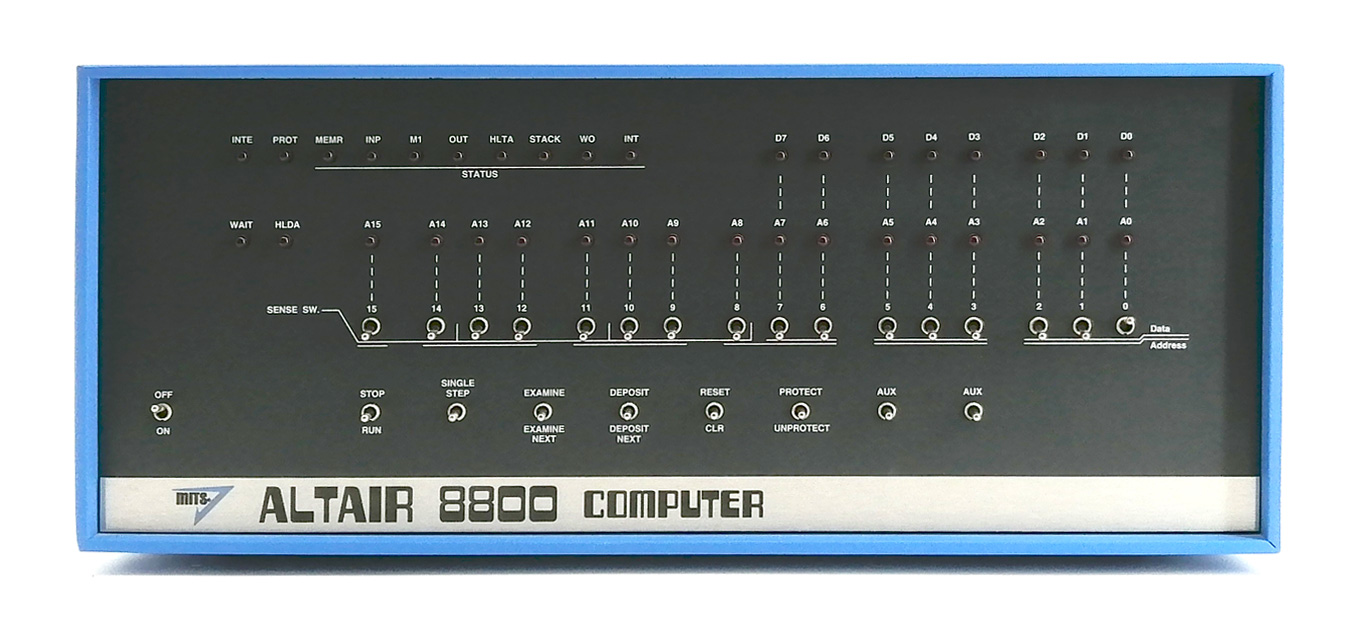The computer as we know today has a large history and depending on how you classify a computer. Our vision is that it is programmable and has an input and output.
With that in mind, the accepted first computer starts in 1938 with Conrad Zuse’s Z1. A mechanical computer capable of being programmed and having an input and output.
But we are the HomeComputerMuseum. We preserve the history of the home computer for and with current and future generations. Defining the home computer as any computer meant for home usage and capable of playing games but not exclusively. Meaning a Nintendo NES doesn’t qualify, but a Commodore 64 or even a Windows ME-computer does. We also preserve computers which are of significant value to the history of the home computer.
Our collection starts in the 1975 with the Altair 8800 as the first computer meant for hobbyists at home.

The importance
You are now reading this on a modern device and it’s contents is being shared all over the place. Chances that this data in 10 years is still readable and accessible is close to 100% certain. It’s even likely that in 100 years or a 1000 years this could still be around in one way or another.
But, how many of you can read hieroglyphs? Only a handful of people can actually read it and even they are not fully certain the content or hieroglyphs is really understood. That may be a bit exorbitant to compare, but it’s not that far fetched. There’s information (data) on old storage media which is very hard to restore nowadays. Maybe it’s a simple Wordperfect file on a 5,25″ floppy or maybe it’s a more elusive piece of software on even a more strange storage format. The HomeComputerMuseum has this knowledge of both hardware and software to restore and preserve this data. We’re talking about the fastest changing industry mankind has ever seen. From holes in pieces of paper to storage on something as small as your nail.
Then there’s the evolution of hardware and how businesses managed to use this to become big companies, but due simple errors or changing the company into a wrong direction, these companies went bankrupt only leaving their legacy. Everybody can learn from this.
This is why the HomeComputerMuseum exist and we do a lot of research, to preserve all of this.
The research
We receive a lot of donations. Every computer coming in has its own story. Why did the person buy it? This makes every computer a piece of heritage, at least to that one person. Sometimes these stories are bigger, thanks to this object a bigger event occurred. This is a piece of history is important to preserve and share if allowed.
A similar idea can be said about objects we didn’t have prior. Where does this object belong in the history, why is it made, what happened to the company creating the object. Is the information available correct?
Preserving these stories and asking these questions is exactly what the HomeComputerMuseum does. And for most things, we are able to dig deep and find this information. For a few things, we need help and that why we hope you have come to this page.
How can I help?
The HomeComputerMuseum is a volunteer-run company having a lot of monthly costs to run. As of end of 2023, we don’t have sponsors of subsidy that allow us to invest time and money into these researches.
We consider running the museum as one of our projects, which can be found on this page.
In essence, we are helped with money. But also materials can help us. We have set goals for both short- and long-term (> 3 year) and per project is visible what we need to reach that goal. These are all goals we are going to make, but perhaps not in the set time without help.
You can also ask us to do research to anything related to home computers. With the information we have already, we can get in contact with people and connect stories and find explanations for what happened. All to preserve, learn and share.
Making sure the history of computers is well-preserved.